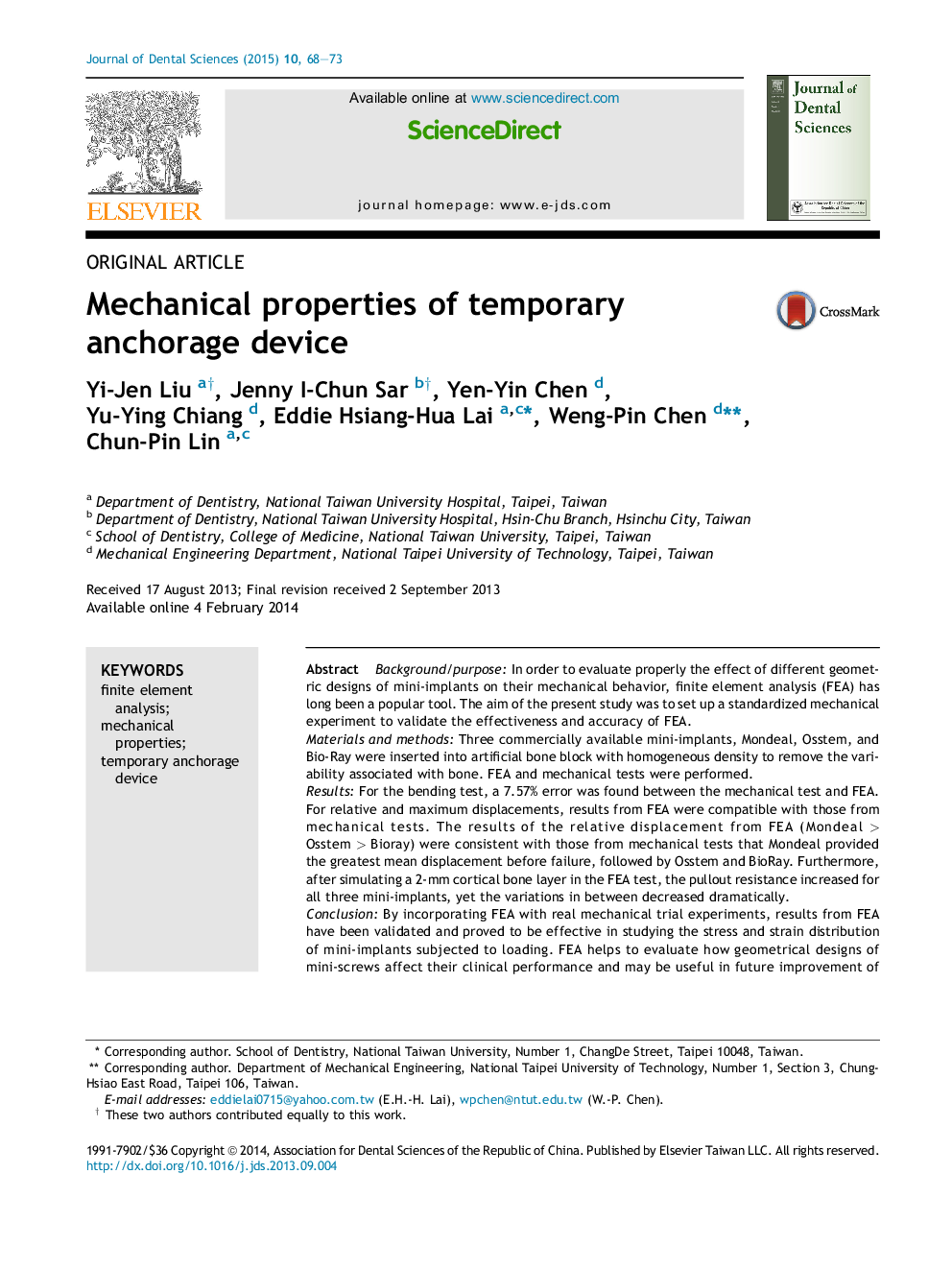| Article ID | Journal | Published Year | Pages | File Type |
|---|---|---|---|---|
| 3144669 | Journal of Dental Sciences | 2015 | 6 Pages |
Background/purposeIn order to evaluate properly the effect of different geometric designs of mini-implants on their mechanical behavior, finite element analysis (FEA) has long been a popular tool. The aim of the present study was to set up a standardized mechanical experiment to validate the effectiveness and accuracy of FEA.Materials and methodsThree commercially available mini-implants, Mondeal, Osstem, and Bio-Ray were inserted into artificial bone block with homogeneous density to remove the variability associated with bone. FEA and mechanical tests were performed.ResultsFor the bending test, a 7.57% error was found between the mechanical test and FEA. For relative and maximum displacements, results from FEA were compatible with those from mechanical tests. The results of the relative displacement from FEA (Mondeal > Osstem > Bioray) were consistent with those from mechanical tests that Mondeal provided the greatest mean displacement before failure, followed by Osstem and BioRay. Furthermore, after simulating a 2-mm cortical bone layer in the FEA test, the pullout resistance increased for all three mini-implants, yet the variations in between decreased dramatically.ConclusionBy incorporating FEA with real mechanical trial experiments, results from FEA have been validated and proved to be effective in studying the stress and strain distribution of mini-implants subjected to loading. FEA helps to evaluate how geometrical designs of mini-screws affect their clinical performance and may be useful in future improvement of screw designs. Based on our results, we have found that in clinical situations, the cortical bone layer plays an important role in the stability of the mini-implants.
